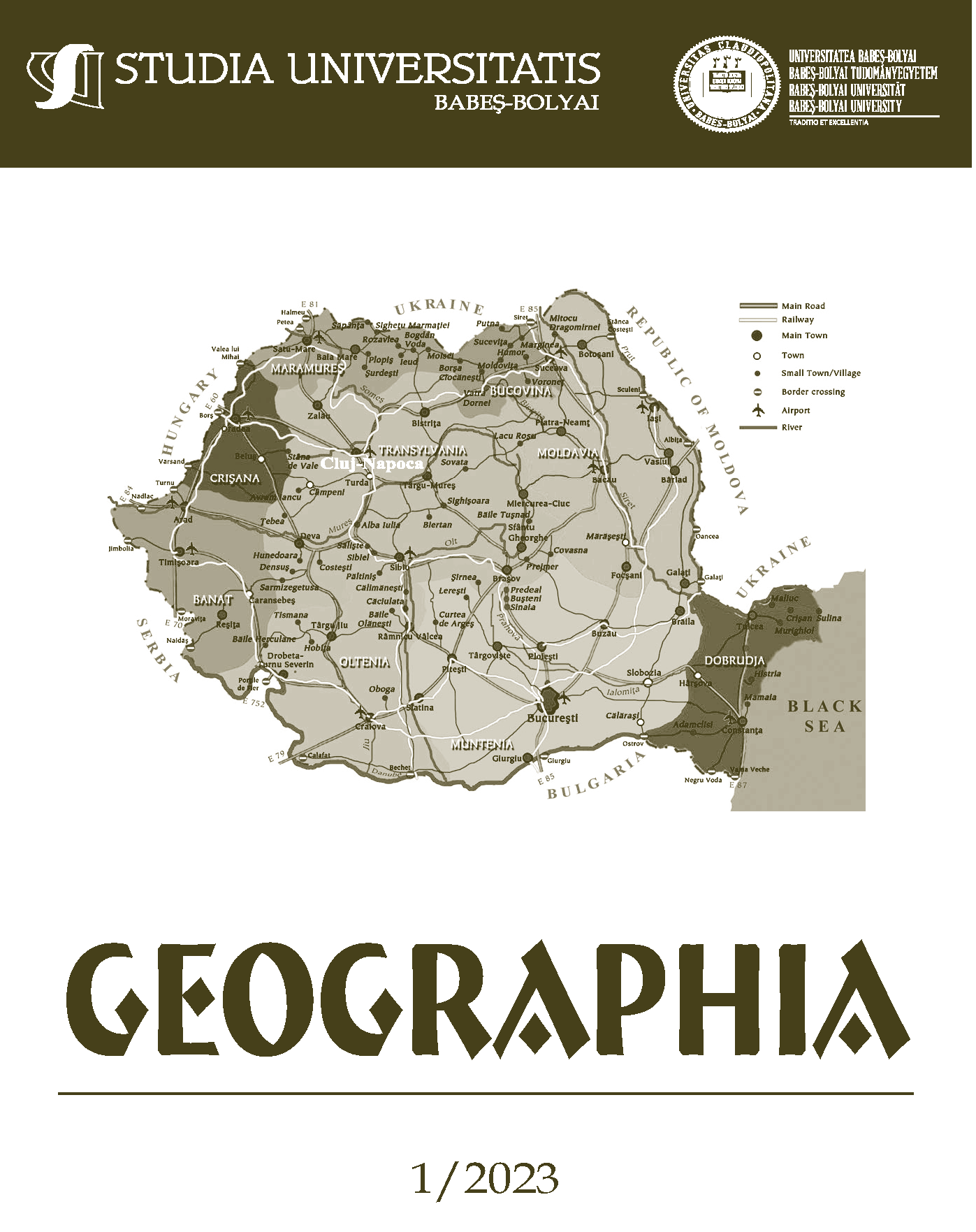ARCHAEOTOURISTIC AXES RELATED TO ROMAN CAMPS IN BISTRIȚA-NĂSĂUD, CLUJ AND SĂLAJ COUNTIES IN ROMANIA
DOI:
https://doi.org/10.24193/subbgeogr.2023.1.03Keywords:
tourism, archaeology, heritage, touristic axes, Roman camp, Dacia Porolissensis.Abstract
The current research has a desire to launch the concept of archaeological tourism on the territory of Romania. The goal is to make tourists aware of the many discoveries made over the years and to create a form of self-contained tourism. We identified 2 main tourist axes of the Roman camps in Bistrița-Năsăud, Cluj and Sălaj counties, camps that once belonged to the territory of Dacia Porolissensis. The role of these axes is to create a notoriety of the archaeological destinations and to reduce the transit type tourism. Through institutional cooperation these areas could become points of regional and national interest.References
Buršić-Matijiašić, V., Matijiašić, R. (2016), The management of arhcaeological heritage in Istria County, in Urošević, N., Rakitovac, K.A. (eds.), Models of valorisation of cultural heritage in sustainable tourism, Juraj Dobrila University of Pula, Pula, 2017, pp. 177-190.
Chirilă, E., Gudea, N., Lucăcel. V., Pop, V. (1972), Castrul roman de la Buciumi, Muzeul de Istorie și Artă, Zalău, pp. 7-9.
Costea, M. (2011), Development of Tourism in the Transalpine Area. Premises and possibilities, Forum geografic. Studii și cercetări de geografie și protecția mediului, Volume 10, pp. 329-340.
Gaiu, C., Zăgreanu, R. (2011), Inscripții si piese sculpturale din Castrul Roman de la Ilișua, Editura Accent, Cluj-Napoca, pp. 7-12.
Găzdac, C., Pripon, E. (2012), Castrul auxiliar de la Buciumi, Editura Mega, Cluj-Napoca, pp. 11-15.
Gubam, D., Nomishan, T. (2020), Archaeology and Tourism in Nigeria: An Overview, Journal of Tourism and Heritage Studies, Volume 9, pp. 91-101.
Gudea, N. (1997), Das Römergrenzkastell von Bologa-Rescvlvm/ Castrul roman de la Bologa-Rescvlvm, Congresul Internațional de studii asupra Frontierelor Imperiului Roman, Zalău, pp. 7-12.
Gudea, N. (1997), Das Römergrenzkastell von Moigrad-Pomet. Porolissum 1/ Castrul roman de pe vârful Pomet- Moigrad. Porolissum 1, Congresul Internațional de studii asupra Frontierelor Imperiului Roman, Zalău, pp. 7-12.
Gudea, N. (1997), Der Meseș- Limes/Limesul de pe munții Meseș, Congresul Internațional de studii asupra Frontierelor Imperiului Roman, Zalău, pp. 7-12.
Isac, D. (2003), Castrul roman de la Samvm-Cășeiu, Editura NAPOCA STAR, Cluj-Napoca, pp.18-23.
Isac, D., Găzdac, C. (2007), The auxiliary forts from Samvm (Cășeiu) and Gilău, Editura Mega, Cluj-Napoca, pp. 9-11.
Lawrence, N.K., Collins-Kreiner, N. (2018), Visitors with their `Backs to the archaeology’ religious tourism and archaeology, Journal of Heritage Tourism, Volume 14, pp. 138-149.
Marcu, F., Isac, A., Isac, D., Cupcea, D. (2013), Peisajul geofizic al așezării de la Samvm și al frontierei romane a provinciei Dacia, Editura Mega, Cluj-Napoca, pp. 4-6, pp.14-16.
Renfrew, C., Bahn, P. (2005), Archaeology: The Key Concepts, Routledge, London and New York.
Richards, G. (2003), What is cultural Tourism? in van Maaren, A. (ed.) Erfgoed voor Toerisme, Nationaal Contact Monumenten.
Wendrich, W. (2003), Archaeology and Sustainable Tourism in Egypt: Protecting Community, Antiquities and Environment, in Agnew, N., Bridgland, J. (eds.), Of the Past, for the Future: Integrating Archaeology and Conservation, Getty Publications, Los Angeles, California, pp. 184-190.
Downloads
Published
How to Cite
Issue
Section
License
Copyright (c) 2023 Studia Universitatis Babeș-Bolyai Geographia

This work is licensed under a Creative Commons Attribution-NonCommercial-NoDerivatives 4.0 International License.





 ©Studia Universitatis Babeş-Bolyai Geographia. Published by Babeș-Bolyai University.
©Studia Universitatis Babeş-Bolyai Geographia. Published by Babeș-Bolyai University.